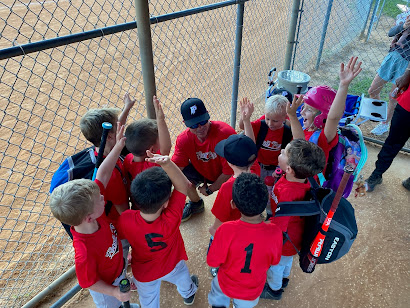Averting Heartbreak: Strategies for Preventing Wrongful Deaths
The pain of losing a loved one is always profound, but when the death is preventable, the grief can be even more overwhelming. Wrongful deaths—fatalities caused by negligence or misconduct—are particularly tragic because they could have been avoided with proper precautions and care. Preventing these unnecessary losses requires a coordinated effort across various sectors of society. Through education, policy reform, and community involvement, we can work together to reduce the incidence of wrongful deaths and safeguard the well-being of our communities.
The Scope of Wrongful Deaths
Wrongful deaths can occur in many different contexts, including medical errors, automobile accidents, workplace incidents, and criminal acts. Each scenario involves a failure to uphold a duty of care, resulting in a fatality that should not have happened. Understanding the common causes of wrongful deaths is the first step in developing effective prevention strategies.
Promoting Awareness
Raising awareness about the causes and consequences of wrongful deaths is crucial. Educating the public can foster a culture of vigilance and responsibility. Here are some key methods to promote awareness:
- Public Service Announcements: Utilizing television, radio, and social media to broadcast messages about safety and prevention can reach a wide audience. These announcements can cover various topics, such as safe driving practices, the importance of workplace safety, and the risks of medical errors.
- Educational Campaigns: Schools and universities can play a vital role in educating students about safety. Incorporating road safety, health literacy, and emergency preparedness lessons into the curriculum can instill lifelong habits that reduce the risk of wrongful deaths.
- Community Outreach: Local governments and non-profit organizations can host workshops and seminars to educate the public about the importance of safety measures. These events can provide practical advice and resources for preventing accidents and injuries.
- Personal Testimonies: Sharing stories from individuals affected by wrongful deaths can be a powerful tool for raising awareness. These personal accounts can highlight the real-world impact of negligence and the importance of preventive measures.
Implementing Preventive Measures
Raising awareness is only part of the solution. Concrete actions are needed to prevent wrongful deaths. Here are several strategies that can be implemented:
- Strengthening Regulations: Governments must enforce strict regulations in industries where wrongful deaths are common, such as healthcare, construction, and transportation. Regular inspections and severe penalties for non-compliance help uphold safety standards.
- Enhancing Safety Protocols: Organizations should adopt comprehensive safety protocols and ensure that employees receive regular training. This includes proper equipment use, adherence to safety procedures, and immediate reporting of hazards.
- Investing in Technology: Technological advancements can significantly prevent wrongful deaths. For example, modern vehicles are equipped with safety features like automatic braking and lane departure warnings, which can reduce the risk of accidents. Similarly, hospitals can use advanced diagnostic tools and electronic health records to minimize medical errors.
- Establishing Support Systems: Providing support for individuals affected by wrongful deaths is essential. This includes offering counseling services, legal assistance, and financial aid. These support systems can help families cope with their loss and advocate for necessary changes.
- Encouraging Whistleblowers: Creating an environment where employees feel safe to report unsafe practices can prevent potential tragedies. Whistleblower protections and anonymous reporting systems enable individuals to speak up about hazards without fear of retaliation.
Learning from Tragedies
Analyzing past cases of wrongful deaths can provide valuable lessons and help prevent future occurrences. Here are a few notable examples:
- Medical Malpractice: The death of 18-month-old Josie King from dehydration and a medication error at Johns Hopkins Hospital in 2001 led to significant changes in hospital protocols. The hospital implemented better communication systems and patient safety measures to prevent similar incidents.
- Industrial Accidents: The 1989 Exxon Valdez oil spill, which resulted in environmental devastation and several deaths, prompted stricter regulations on oil transportation and spill response protocols. These measures aim to prevent such disasters in the future.
- Road Safety: The introduction of mandatory seatbelt laws and drunk driving penalties in the 1980s and 1990s drastically reduced the number of fatalities from car accidents. These laws highlight the effectiveness of regulatory measures in saving lives.
Individual Responsibility
Preventing wrongful deaths is a collective effort, but individuals also play a crucial role. Here are some ways individuals can contribute:
- Personal Accountability: Everyone should take responsibility for their actions, whether driving safely, following workplace safety guidelines, or seeking proper medical care.
- Advocacy: Individuals can advocate for stronger safety regulations and support organizations that prevent wrongful deaths. Participating in community safety initiatives and raising awareness about risks can significantly impact.
- Community Participation: Engaging with local safety programs and initiatives can help create a safer community. Volunteering for safety drills, attending safety workshops, and supporting local efforts to improve safety standards are practical ways to contribute.
Preventing wrongful deaths requires a comprehensive approach that includes raising awareness, implementing preventive measures, and encouraging individual responsibility. By working together, we can create a safer environment and reduce the incidence of these tragic, preventable fatalities. Each step we take towards prevention is a step towards a future where fewer families have to endure the heartbreak of losing a loved one to a wrongful death. Through dedication and collective action, we can make meaningful progress in safeguarding the lives of our community members.

Comments
Post a Comment